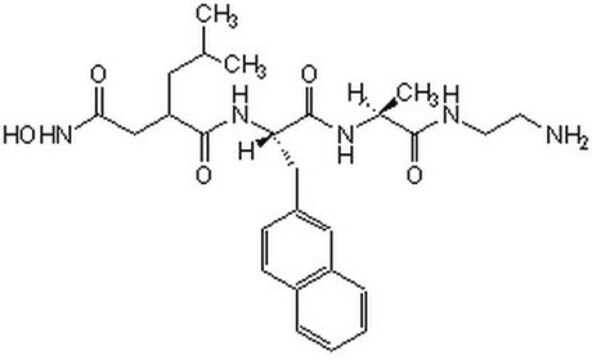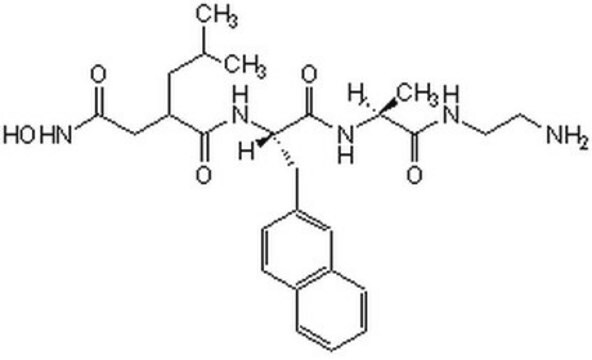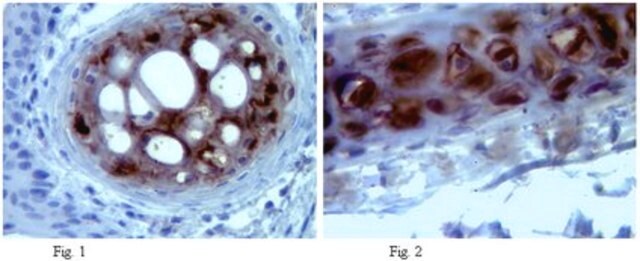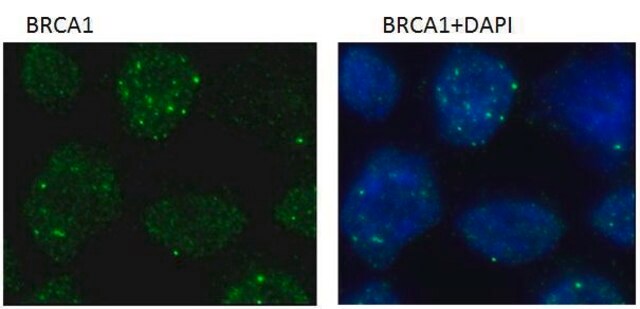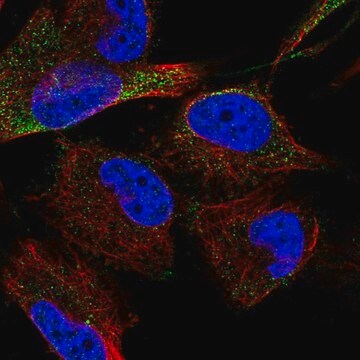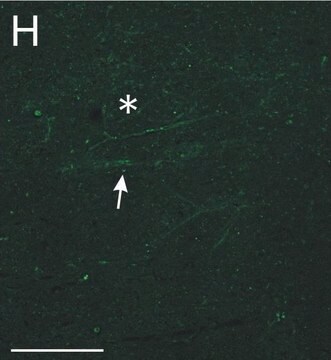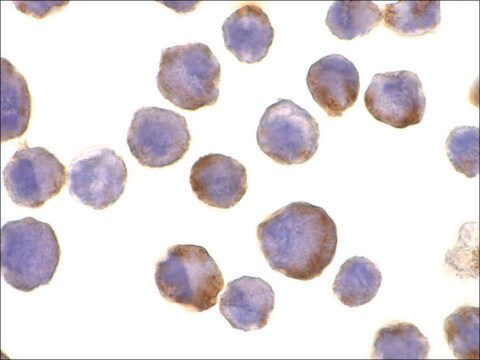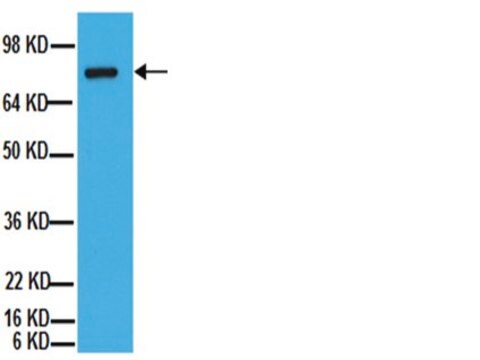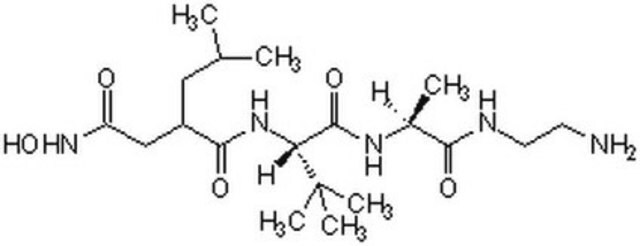General description
Disintegrin and metalloproteinase domain-containing protein 17 (UniProt: P78536; also known as EC:3.4.24.86, ADAM 17, Snake venom-like protease, TNF-alpha convertase, TNF-alpha-converting enzyme, TACE, CD156b) is encoded by the ADAM17 (also known as CSVP, TACE) gene (Gene ID: 6868) in human. TACE is a membrane-bound metalloprotease responsible for solubilizing many pathologically significant membrane substrates. Mature ADAM-family ectodomains contain a globular metalloprotease catalytic domain, a disulfide-dependent disintegrin cysteine rich (Dis-Cys) domain, and, in some cases, an epidermal growth factor (EGF)-like domain. ADAM17 activity is regulated by multiple post-translational modifications. It has three phosphorylation sites on its C-terminal cytoplasmic domain (T735, S791, and (S819). ERK1/2-mediated T735 phosphorylation is reported to regulate ADAM17 maturation and surface expression. TACE displays a narrow endopeptidase specificity. It cleaves the membrane-bound precursor of TNF-alpha to its mature soluble form and is also responsible for the proteolytic release of several other cell-surface proteins, including p75 TNF-receptor, interleukin 1 receptor type II, p55 TNF-receptor, transforming growth factor-alpha, L-selectin, growth hormone receptor, MUC1 and the amyloid precursor protein. Clone D1(A12) exhibits high affinity (Kd = 0.46 nM) for the TACE ectodomain and is the most selectively potent cell-surface ADAM inhibitor. It can independently bind both the complete TACE ectodomain and the isolated catalytic domain (Kd = 5.21 nM). It is shown to be about 5-fold more potent than N-TIMP3 in inhibiting cell surface TACE. Mutations in ADAM17 gene are known to cause inflammatory skin and bowel disease, neonatal, 1 (NISBD1) that is characterized by inflammatory features with neonatal onset, involving the skin, hair, and gut.
Specificity
Cat. No. MABT884 is a recombinant human IgG1 that contains a heavy chain variable (VH) region with affinity towards human TACE noncatalytic Dis-Cys domain and a light chain variable (VL) region that binds human TACE catalytic domain (Tape, C.J., et al. (2011). Proc. Natl. Acad. Sci. U. S. A. 108(14):5578-5583). The VH region of D1(A12) is derived from the scFv named D1 isolated from a phage library generated using pooled lymphocytes from 43 donors (Schofield, D.J., et al. (2007). Genome Biol. 8(11):R254). The D1 VH cDNA was subsequently cloned into a naïve human VL phage-display library for identification and isolation of the hybrid D1(A12) scFv with affinity toward both Dis-Cys domain and the catalytic domain. The D1 VH and A12 VL cDNAs were then cloned into a pBudCE4.1 human IgG1 expression vector for generating the recombinant antibody in HEK293 cells (Tape, C.J., et al. (2011). Proc. Natl. Acad. Sci. USA. 108(14):5578-5583).
Immunogen
Epitope: extracellular domain
See Specificity section.
Application
Detect TACE/ADAM17 using this human monoclonal Anti-TACE, clone D1(A12), Cat. No. MABT884, validated for use in Flow Cytometry and Activity/Function Inhibition.
Inhibits Activity/Function: 6 µg/mL from a representative lot inhibited TACE-mediated CD16 shedding from the surface of stimulated primary human NK cells (Courtesy of Zachary Davis, Ph.D., University of Minnesota, USA).
Inhibits Activity/Function: Representative lots inhibited TACE-mediated substrates shedding from the surface of human cells both in cultures and in mice in vivo (Issuree, P.D., et al. (2013). J. Clin. Invest. 123(2):928-932; Richards, F.M., et al. (2012). PLoS One. 7(7):e40597; Tape, C.J., et al. (2011). Proc. Natl. Acad. Sci. U. S. A. 108(14):5578-5583).
Research Category
Apoptosis & Cancer
Quality
Evaluated by Flow Cytometry in HeLa cells.
Flow Cytometry Analysis: 0.2 µg (2 µg/mL) of this antibody detected TACE expression on the surface of one million HeLa cells.
Target description
93.02/91.12/68.22 kDa (prepro-/pro-/mature form) calculated.
Physical form
Format: Purified
Purified recombinant human IgG1 in PBS without azide.
Storage and Stability
Stable for 1 year at -20°C from date of receipt.
Handling Recommendations: Upon receipt and prior to removing the cap, centrifuge the vial and gently mix the solution. Aliquot into microcentrifuge tubes and store at -20°C. Avoid repeated freeze/thaw cycles, which may damage IgG and affect product performance.
Other Notes
Concentration: Please refer to lot specific datasheet.
Disclaimer
Unless otherwise stated in our catalog or other company documentation accompanying the product(s), our products are intended for research use only and are not to be used for any other purpose, which includes but is not limited to, unauthorized commercial uses, in vitro diagnostic uses, ex vivo or in vivo therapeutic uses or any type of consumption or application to humans or animals.
